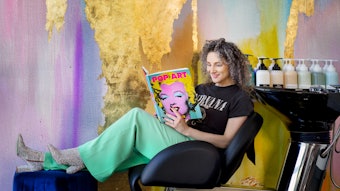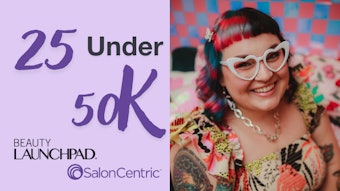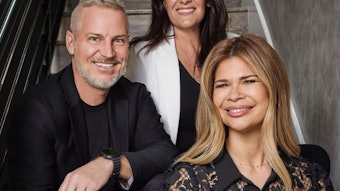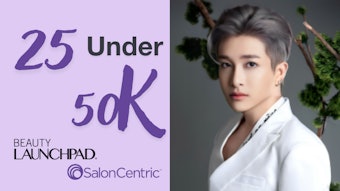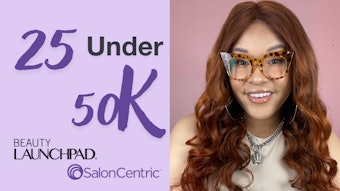
What does it mean to go green? Before we start talking about complicated concepts like carbon footprint or considering things like reusable shopping bags, or going digital to cut down on the amount of paper you use, let’s take a look at the mindset behind all of it — the simple idea of sustainability. If you haven’t already given it a lot of thought, it’s going to require a shift in mindset in the everyday servicing of your clients and running of your business.
People seem to be more aware of sustainability these days than they used to be. Those of us old enough to remember the big hair of the 80s can recall how much hairspray it took to create and maintain those styles. All those propellants affected the planet’s ozone layer and were not environmentally sustainable. Little by little, that trend has since given way to the more natural, softer styles we have today and the kinder, gentler styling products that go with them.
But it didn’t happen all at once. It’s a process — a series of baby steps both you and your clients will have to take to arrive at the goal of sustainability.
Here’s one. Have you ever had a client bring you a picture of a style she wanted that was utterly unsuitable for her hair type and texture? Well, there’s a chance for you to take a baby step toward sustainability. Your client may be a slave to fashion, but you don’t have to buy into that. You can create your own fashion.
Years ago, before it was normal for women to get educated, the only “higher education” they got — those who could afford it — was finishing school, where they learned womanly arts, including the hairstyles and fashions that would enhance their looks, down to the last detail of their own personal style, including their custom signature fragrance.
Women developed a “style” at an early age and carried it with them through life, regardless of fads and fashions that came and went. For sustainability, it wouldn’t be a bad idea to incorporate that old-fashioned way of thinking into the expertise you deliver to your clients today.
Give them a classic haircut that will take into consideration what their hair will and won’t do, one that will look good on them, always.
Maybe she wants those smooth, straight bangs that are all the rage now, but her hair has a natural part that makes it impossible for bangs to lie flat on her. Well, she’s not going to be able to maintain that look without a lot of potentially damaging blow-drying or flat-ironing, where she’s going to have to use a lot of heat to maul the hair into doing something it’s not naturally inclined to do.
So show her how she can still have bangs if she wants them, but maybe sweeping them to the side might work better for her. Show her a way for her hair to look good doing what it’s going to do naturally. Not only will it be easier for her to maintain without overusing heat on her hair, but she may also get compliments that will let her know your suggestions turned out to be right. And she’ll come back again and again.
It’s a fine line you walk when asserting your expertise. Of course, you want to give the client what she wants, but she doesn’t always know what’s best for her hair. However, you can’t afford to be dictatorial about it either. Even a stylist with rock star status like Vidal Sassoon wouldn’t get away with that. No, he coaxed and charmed his way to the top every day, with consistent baby steps.
Or what about the client with thinning hair who’s asking you for hair augmentation. Do you really want to give her glue-in hair extensions, when you know getting them out will take out a good bit of her hair in the process?
If she’s getting the extensions to make her hair look thicker, then you will have just given her the opposite result. The more you do it that way, the thinner her hair will get. And when she realizes this, she may disappear from your life forever, without ever telling you the reason why.
It was a short-term solution that didn’t really address the source of the problem. Operating that way just is not sustainable. Going green requires you to take a longer view of things, and not just slap on a solution of the moment to make a dollar today just because the rent is due. You have to ask yourself, does this solution create a problem for me (or for somebody) down the road?
You can’t solve thinning hair without knowing what’s causing it. Is the client getting the proper nutrients in her diet? Are there any underlying health conditions? You may not be a nutritionist or a doctor, but you can certainly suggest that she consult with these other professionals, while you use what you know to improve the situation, without causing further damage.
If the condition is caused by clogged follicles, it may resolve with special shampoos and conditioners. It’s not a comprehensive solution by any means, but at least it won’t make the condition any worse.
You can also read up on healthy foods for the hair and tell your client about them. Tell her where you found the information, so she can do further research for herself. She may be frantic for an instant solution, but you don’t have to buy into her panic and do something against your better judgment, just because she’s clamoring for a magic trick.
She’s only frantic because she lacks information, and she can sometimes get that right on her smartphone while she’s sitting in your chair, if you can point her in the right direction.
Instead of falling into the trap of giving an expedient, momentary solution with no thought of tomorrow, show her how to get the information she needs, and she’ll calm down enough for you to serve her properly.
And how about the client who just has to have a relaxer right now, when her hair is too fragile to withstand the chemical stress. Tomorrow, when her hair falls out, she’ll be angry at you, when all you did was what she demanded.
How do I know this? Because I once lost one of my best customers by doing what she demanded, against my better judgment. I even warned her of what might happen, but she insisted, and I was afraid I’d lose her if I didn’t do what she wanted.
Well, I lost her anyway. So in the 20/20 vision of hindsight, I can see it would have been better to lose her by refusing to do what she was urging me to do, if I was going to lose her no matter what I did. If only we’d had smartphones back then, maybe it would have helped to point her to an authoritative website, to back up what I was telling her.
But you live and learn, and going green is about making hard decisions sometimes. These stories are based on a couple of decades of experience, and Kermit the Frog is right when he says, “it ain’t easy being green.” It might be a little easier for you if you can learn from my mistakes and not have to make them yourself.
Going green may require you to make some changes. But they don’t have to be made all at once. You can get there by taking little baby steps on a regular basis.
Every time you come to a fork in the road on your path to success, ask yourself which way is greener or more sustainable. As the public becomes more aware of sustainable options, you’re going to want to be the one they think of to provide greener choices. Do you plan to be in business tomorrow, next week, next year, and beyond? Then make each small decision accordingly. Take your baby steps. They’ll add up in the end to a greener, more sustainable business.
